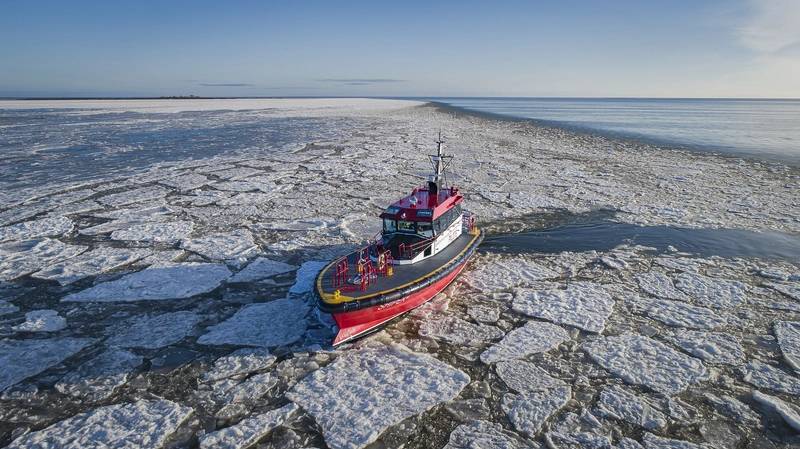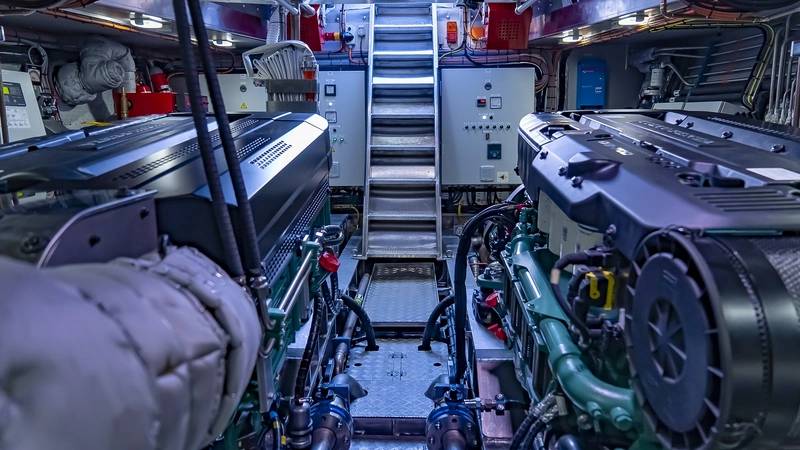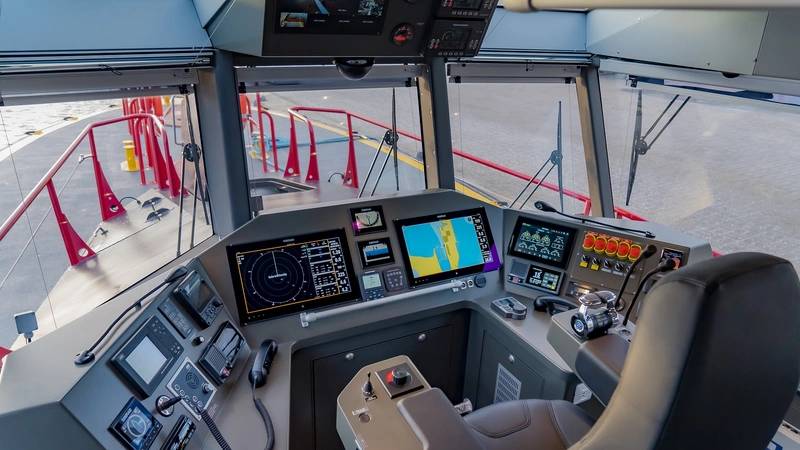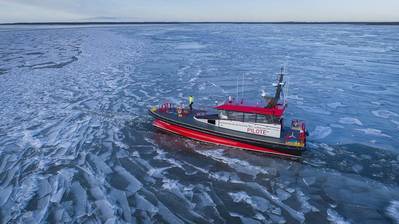Baltic Workboats Delivers New Launch for the Laurentian Pilotage Authority
The Laurentian Pilotage Authority (LPA), based in Montreal, Canada, provides pilotage services in Canadian waters in and around the province of Quebec where cold weather can often be an issue for marine operators. So when it came time to order a new pilot boat, the LPA sought a vessel that could stand up to the region’s frigid conditions.
The pilots turned to Estonia-based Baltic Workboats for the design and construction of the ice-capable Shipeku, a new 17-meter aluminum pilot boat delivered to the LPA earlier this year.
“The Shipeku project was interesting because the pilots are dealing with ice,” said Carl Mahler, head of sales for Baltic Workboats US. “We wanted to give them an aluminum boat so that it was fast, but have that boat be capable of being used for as much of the year as possible.”
Inspiration for the vessel came from another 17-meter wave-piercing pilot boat that Baltic Workboats delivered to Poland at the end of 2020. Shipeku is designed with ice frames and reinforcements that enable it to work in four to six inches of ice,” Mahler said. “We also came up with a system that uses the waste heat from the engines to heat the seat chests so that we don't need to use keel coolers,” he added.
 (Photo: Baltic Workboats)
(Photo: Baltic Workboats)
The self-righting Shipeku has a beam of 5.6 meters, 1.45-meter draft and space for one coxswain and six passengers. The vessel boasts firefighting capabilities and has two man overboard systems, including a davit on the port side and a hydraulic rescue platform that comes off the stern into the water.
A standout feature is Baltic Workboats’ patented wave-piercing hull, which helps to navigate through ice while also delivering improved maneuverability and seakeeping characteristics.
When the bow becomes submerged in rough sea conditions, the top surface of the bow creates increased downforce, which compensates for the buoyancy of the bow. “As you're going through the wave, instead of coming over it and back down, you're going through it,” Mahler said, noting that design reduces pitching motions and provides a smoother, quieter ride with less vibration at all speeds.
“We put this technology side by side with traditional vessels, with accelerometers measuring all of the different positions in the boat, and we show a measurable reduction in the vertical accelerations in the vessels around 25%. We also have the benefit of a longer waterline length . . . which is going to help [the vessel] be more efficient and burn less fuel.” The boat’s range is about 300 nautical miles.
“She's got twin [Volvo Penta] D-13 engines, 700 horsepower each. The boat can do 32 knots, and it's very efficient. At the cruising speed of 25 knots, she's burning less than 50 gallons per hour,” Mahler said. The IMO Tier III-compliant engines drive fixed-pitch propellers via ZF gearboxes.
 (Photo: Baltic Workboats)
(Photo: Baltic Workboats)
In addition to its hull design, Shipeku’s remote monitoring system is another feature that sets the vessel apart. “[The system is] something that we've been working on for the last 15 years, and the capabilities have really come a long way,” Mahler said.
“On our boats, you'll notice there are not many switches in the wheelhouse. Everything on the boat is controlled through PLCs, which feed to a touch screen in the wheelhouse.” A single screen can be used to control the lights, start the engines, see all of the engine sensor data and more. “You can turn on and off equipment just as you would with normal switches,” Mahler said. “But, since this is all being done electronically, it also gives the ability to capture all of this data in real time.”
 (Photo: Baltic Workboats)
(Photo: Baltic Workboats)
Mahler noted that Shipeku and other pilot vessels often operate on routes that are repeatable, meaning data can be compared from one trip to another to measure things like fluctuations in fuel burn. “And then along the way, if there's any alarms, we can see all of the data that corresponds to that event,” he said. “Without even being on the boat, we can look at this data and a lot of times we can figure out what's wrong or even narrow it down to two or three things, but that we know exactly where to look when you get in the engine room.”
“From a manufacturer standpoint, it really helps us to provide better support for our customers,” Mahler said. “As you know, pilot boats really have to work. We can't have boats out of service for long periods of time because it's a critical service.”
Baltic Workboats is currently building a sister vessel to Shipeku, but the boat will no be going to a pilot association. Mahler said a “well-known private customer” recently ordered the vessel to meet a unique need to operate in any weather condition. “That was the most important criteria for the customer: safety and operability in any condition. And they said, ‘Well, what better platform than a pilot boat?’”











